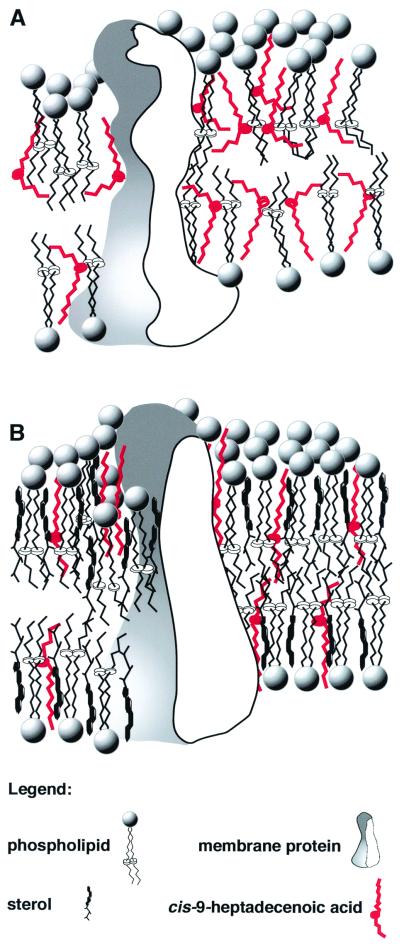FIG. 1.
Proposed model of activity of CHDA, an antifungal compound produced by P. flocculosa. (A) Susceptible fungi. CHDA partitions into the hydrophobic region of fungal membranes, producing significant changes in the packing of lipid molecules by inducing disorder in neighboring acyl chains due to its high motional freedom. The resulting change in membrane dynamics would affect the activity of membrane-bound proteins. These effects result in alteration of membrane potentials which leads to its collapse, as reported for susceptible fungi exposed to P. flocculosa (17). (B) Resistant fungi. Sterols buffer stress-induced fluctuations in membrane fluidity by ordering fatty acyl chains. This would maintain more optimal activity of membrane-bound enzymes and proteins by minimizing the impact of the CHDA-induced disordering effect. Minimal membrane alterations are induced, and resistant fungi can overcome this stress, as observed with I. bolleyi (2). This model is consistent with the activity of the other related antifungal fatty acids produced by P. flocculosa, namely 6-methyl-9-heptadecenoic acid, whereby its methyl branch would cause an even greater disturbance in the lipid environment which would explain its greater activity in vitro (1, 5).

